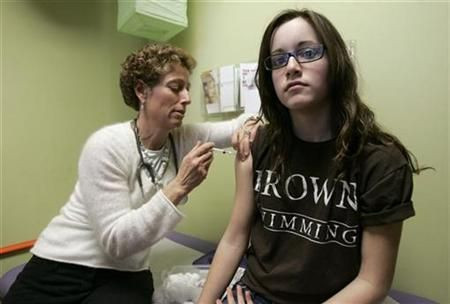Cervical Cancer Awareness, Prevention Likely To Save Women's Lives

About 12,000 women in the U.S. are prone to cervical cancer each year. Though it was a second leading cause of death in American women years ago, today it is identified as preventable if detected early. The rate of cure is also very high.
January is the designated as the Cervical Cancer Awareness Month by the U.S. Congress. It is estimated that 20 million Americans currently carry the Human Papillomavirus (HPV), the most common sexually transmitted virus that leads to cervical cancer.
The American Cancer Society is more conservative in its estimates for 2013, stating the identification of 12,340 cases of invasive cervical cancer and death of 4,030 women from cervical cancer.
Cervical cancer is said to occur in midlife and is not common among young women. It does occur even in women below 20 years of age. Besides, many older women do not seem to realize that they are susceptible to developing the cancer as they age as more than 20 percent of cases are found in women over 65.
Studies seem to indicate that Hispanic women are more prone to cervical cancer and they seem to have poor access to family planning services, the Huffington Post has reported, adding nearly 37 percent are uninsured.
The Hispanics are followed by African-Americans, Asians and Pacific Islanders and whites in that order. The American Cancer Society notes that American Indians and Alaskan natives seem to have the lowest risk of cervical cancer in the U.S.
At present, the Pap test is advocated to detect pre-cancerous cells and cancerous cells in the cervix. It is not recommended for women below 21 years. For those between 21 and 29 years, it is recommended annually or one to three years based on medical history, Dow Jones Local Media Group has reported.
For women in the age group 30 to 65 years, the current recommendation advocates Pap test every five years while physical examination, including internal examination, is also advocated annually.
There is also an HPV vaccination program that is recommended for 11- and 12-year-old girls. It is recommended for women in the age group of 13 to 26 years. Some experts aver that it can be taken by girls beginning at age nine.
According to the Centers For Disease Control, there are over 40 different strains of HPV that also include the ones that affect the throat and mouth.
In addition to having HPV, other factors that may increase chances of contracting cervical cancer are smoking, having HIV and using birth control pills for a long time or having given birth to three or more children.
The Guardian, the Wright State University's campus newspaper, states that once diagnosed with cervical cancer, patients need to ask for reference to a gynecologic oncologist, who will frame the treatment plan.
Cervical cancer can go undetected until the later stages. And for women diagnosed with cancer, a colonoscopy or a cervical biopsy may be advised to study the cervix closely.
© Copyright IBTimes 2024. All rights reserved.





















